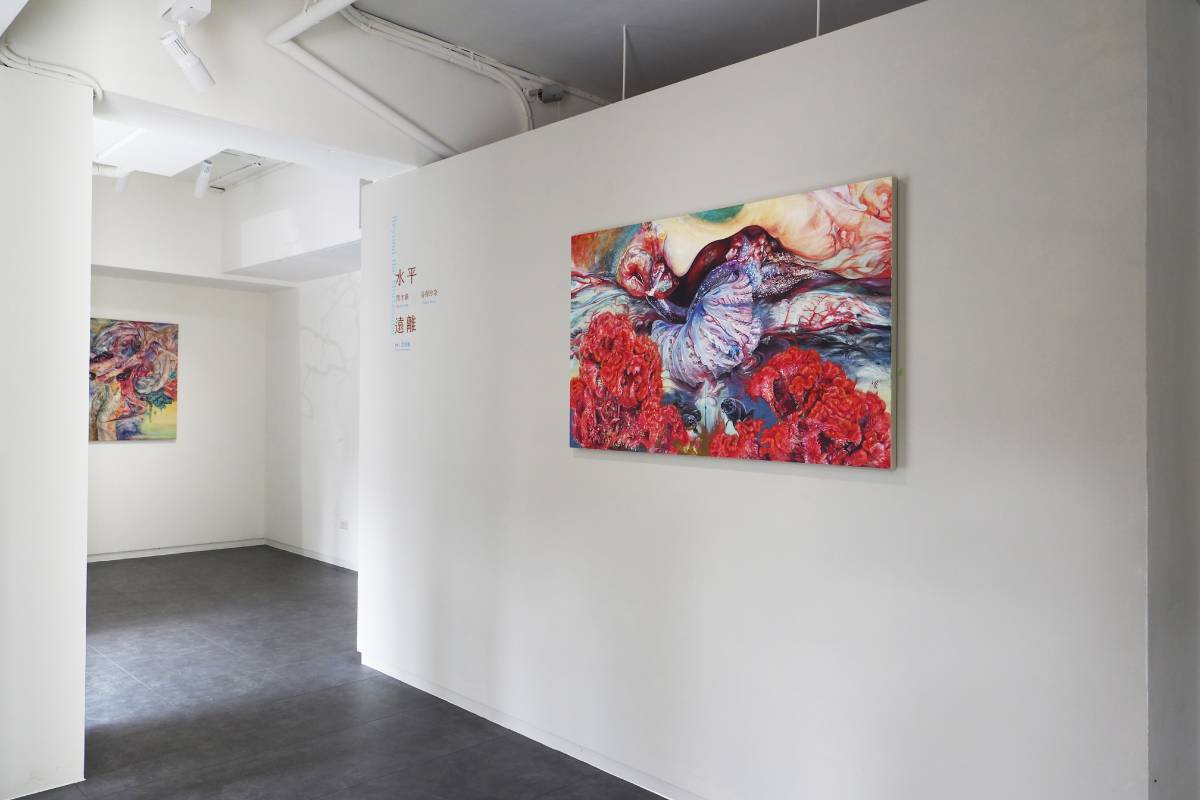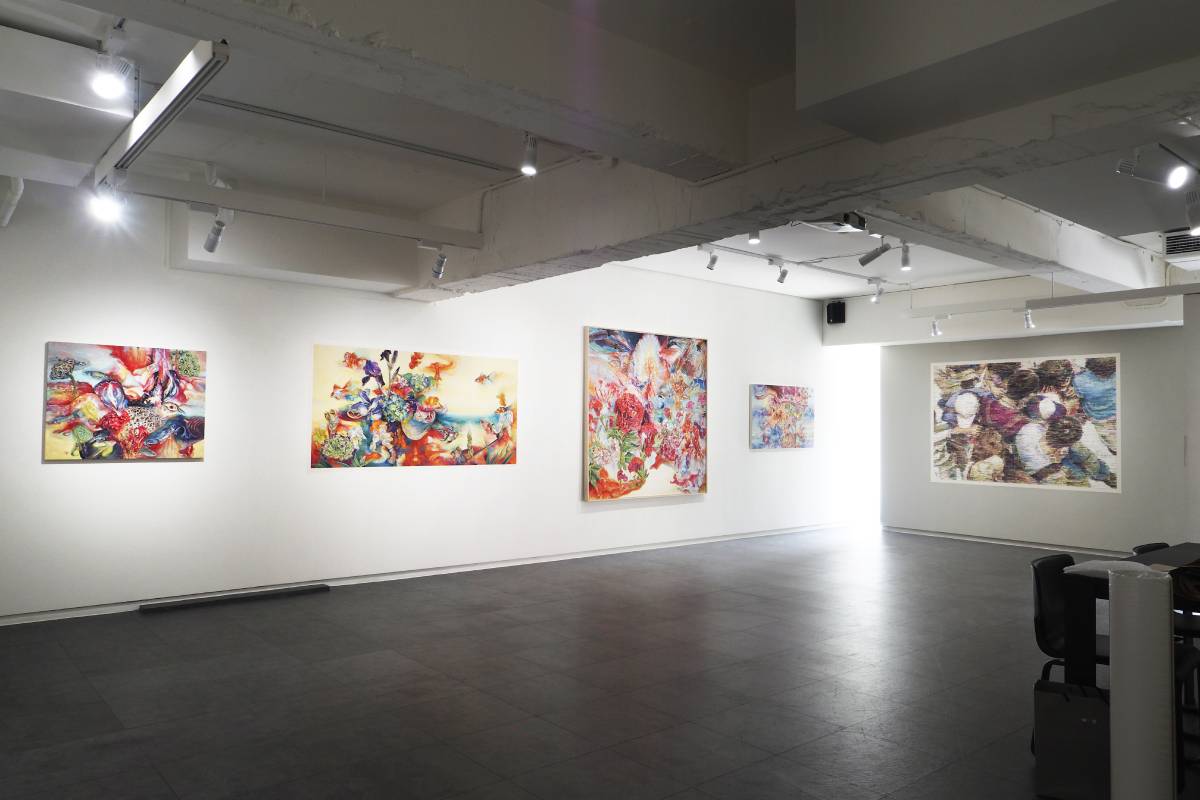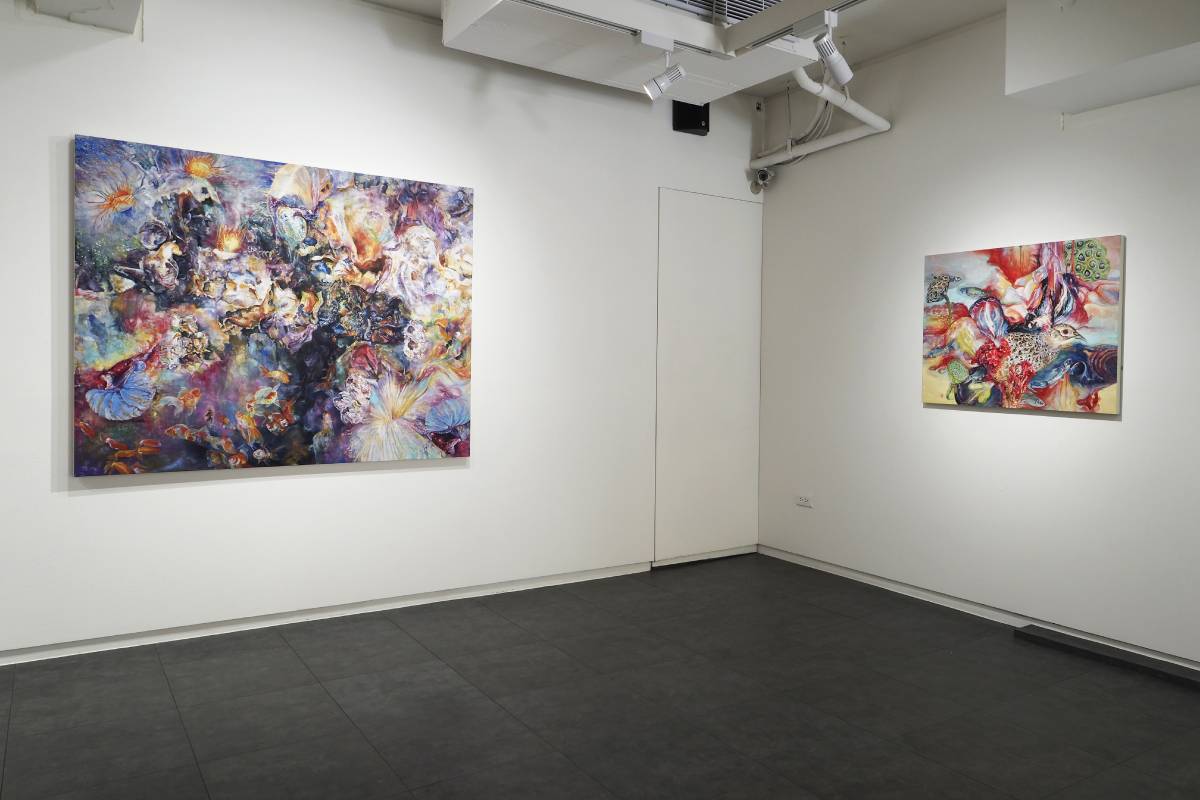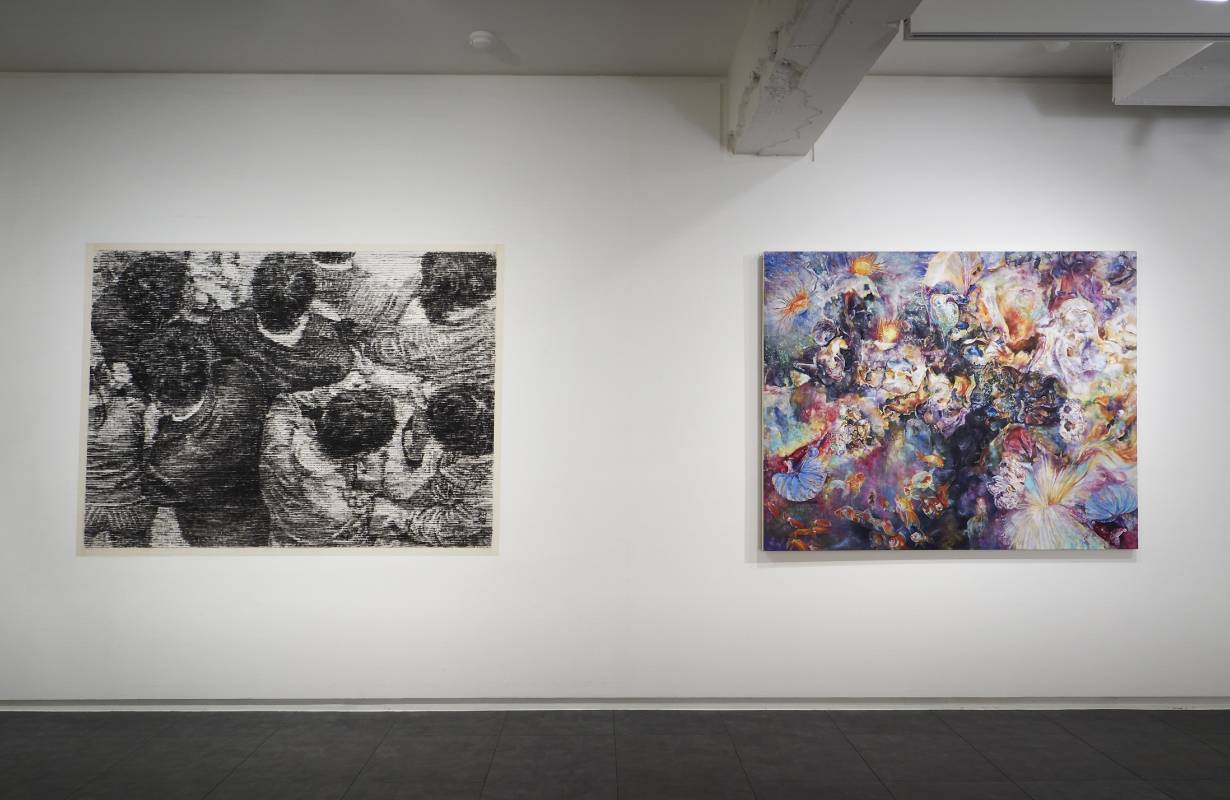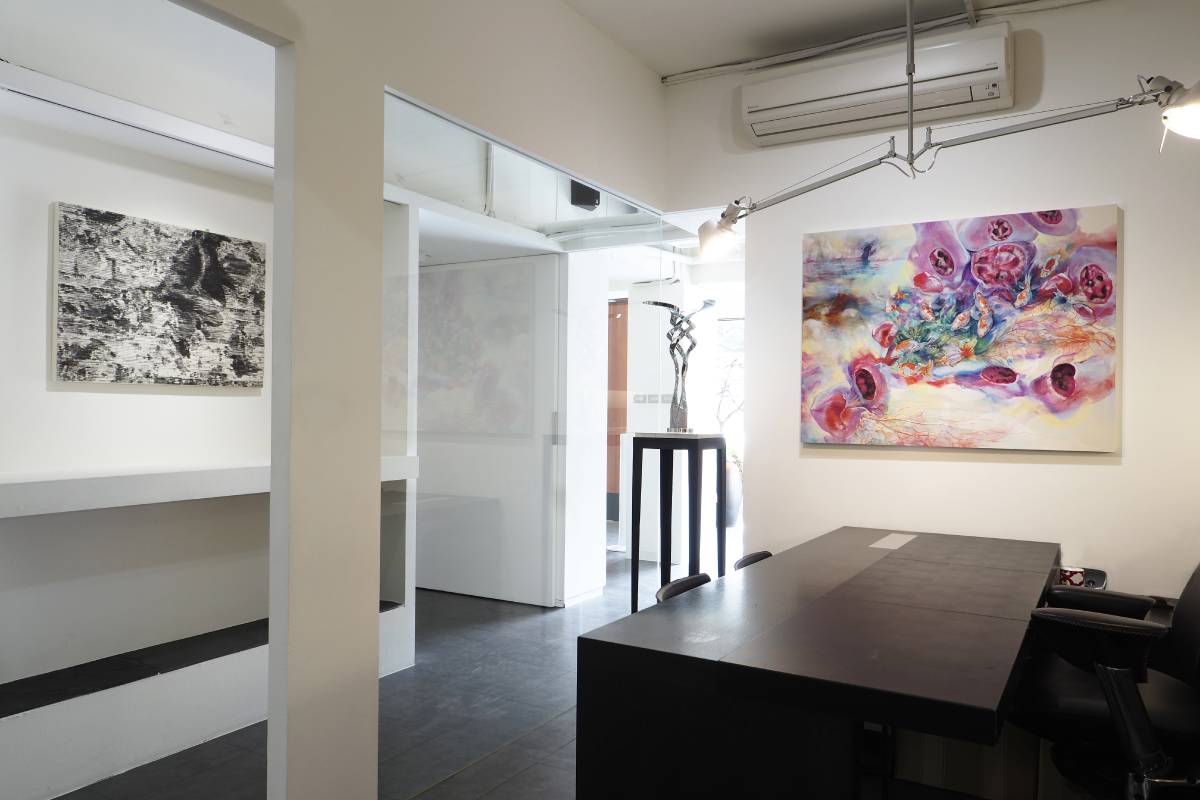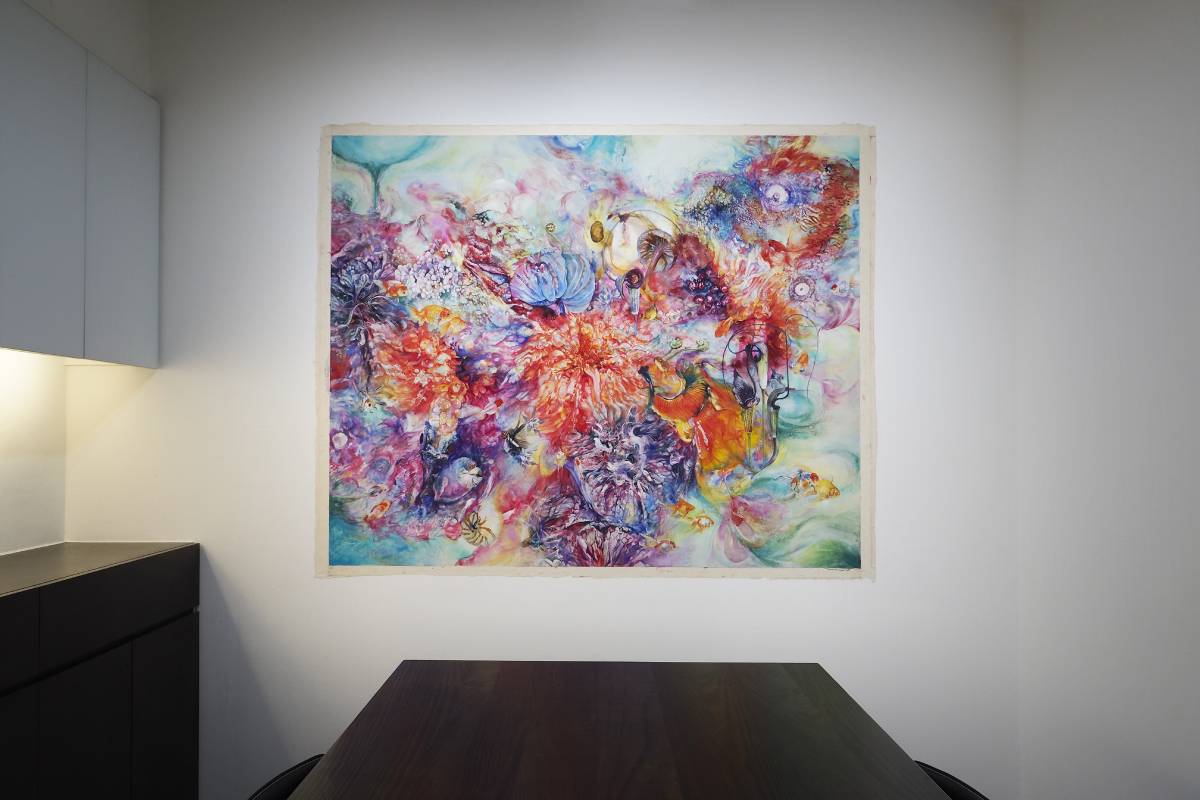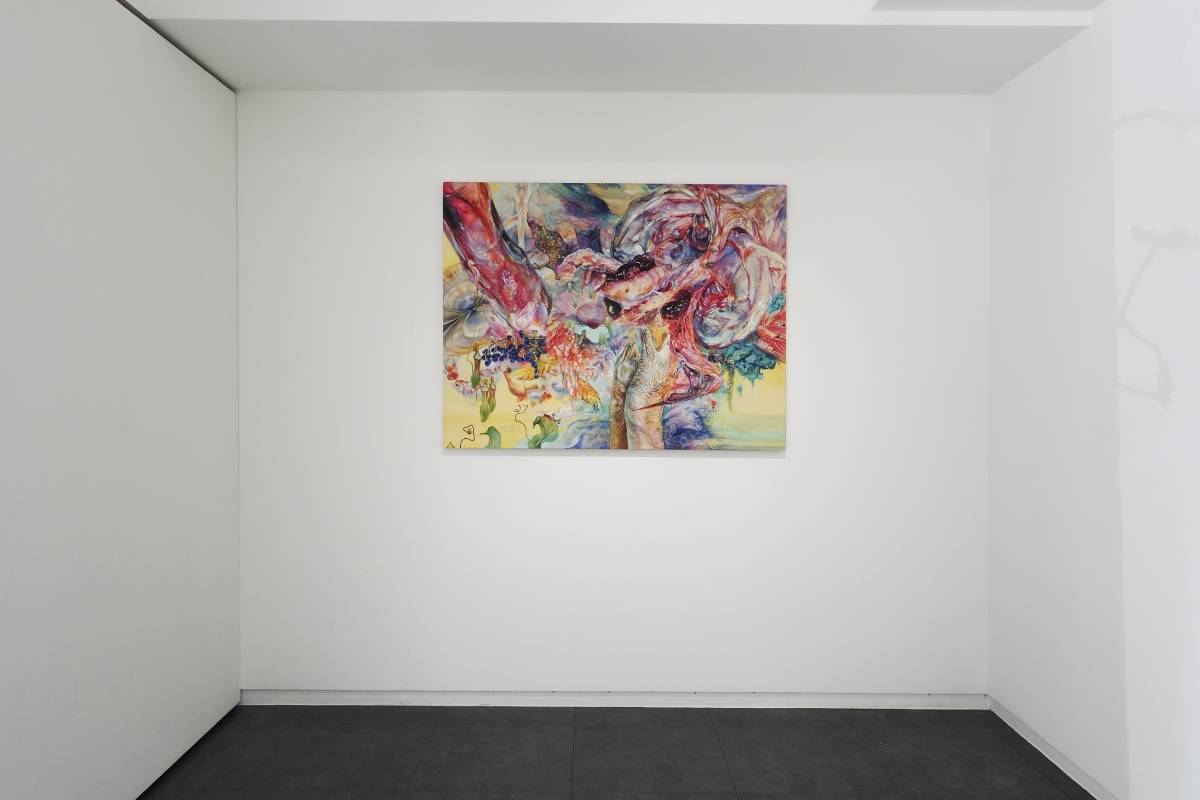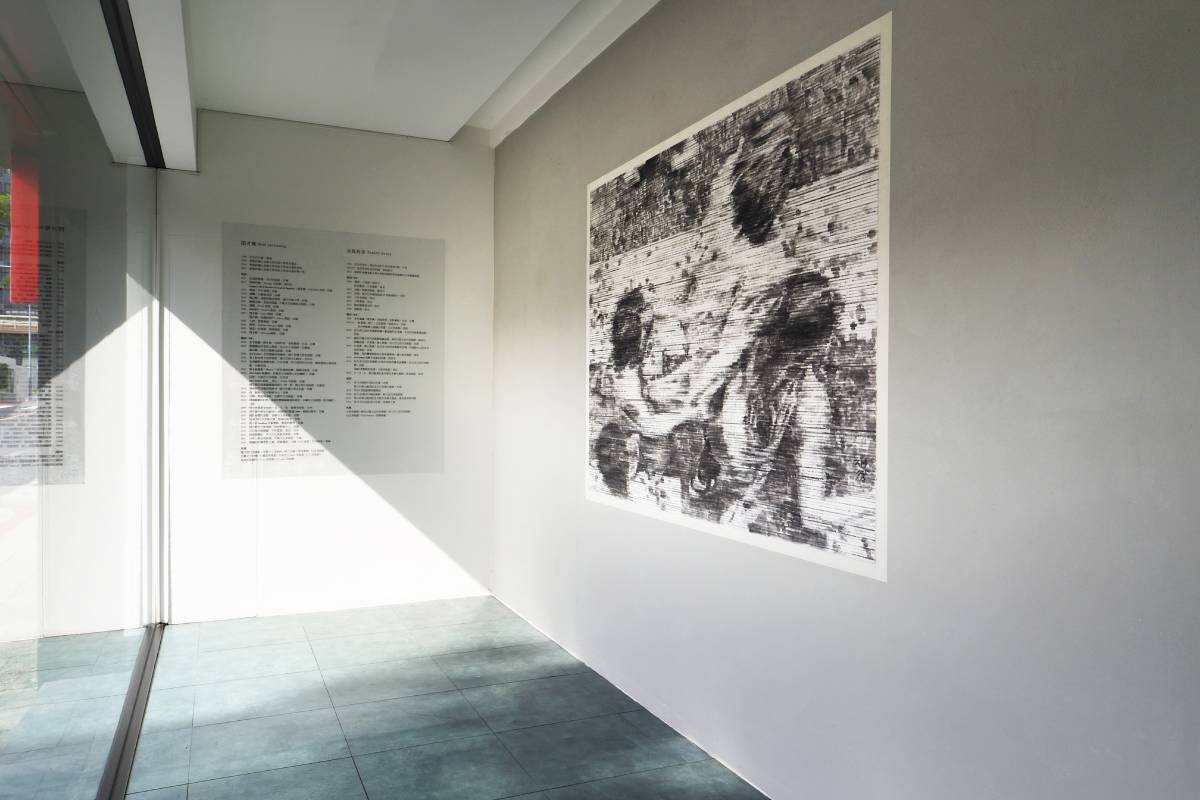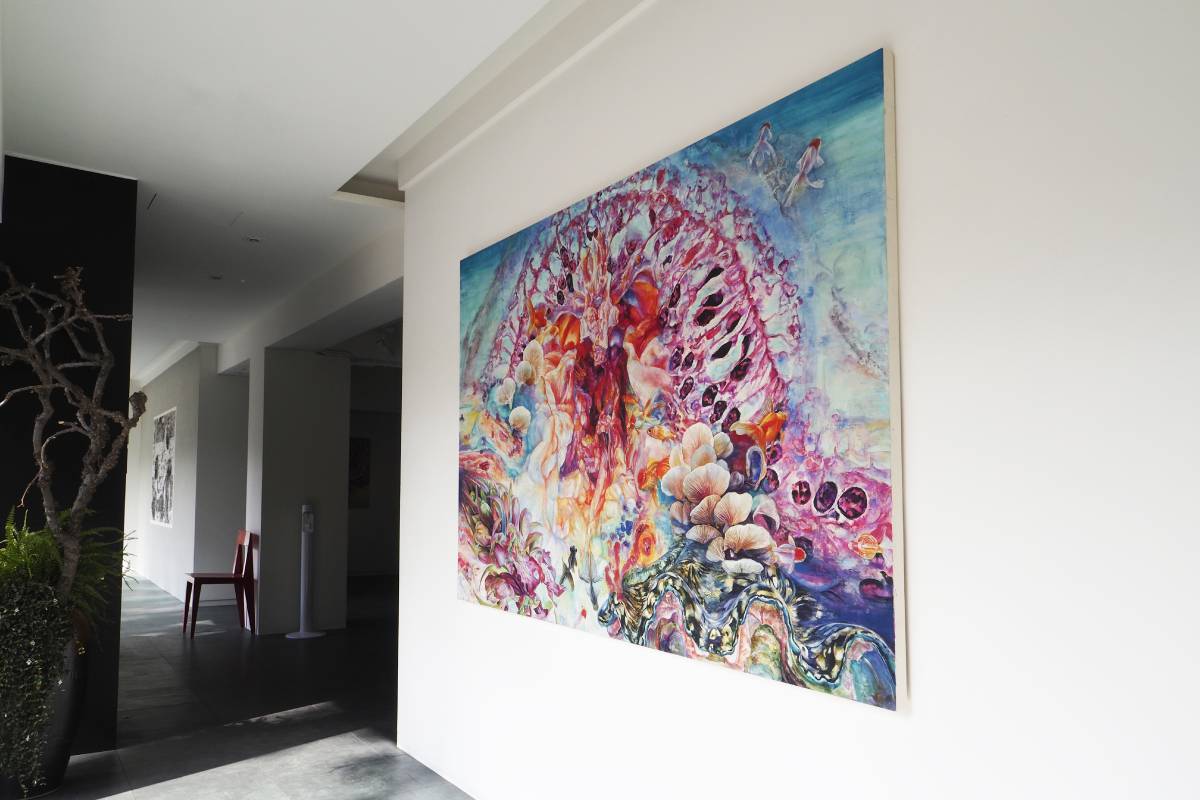赤粒藝術
【水平遠離】閔才暎、谷保玲奈 聯展
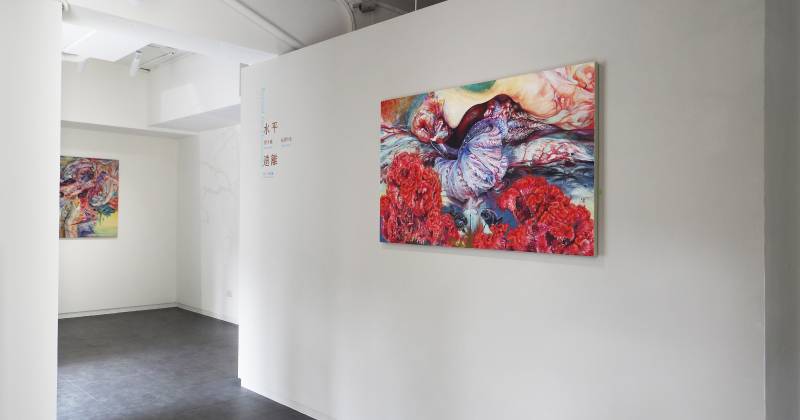
-
水平遠離 Beyond the Horizontal
文貞姬(國立臺南藝術大學副教授)
東亞近代美術的誕生,在日本產生了「日本畫」和「東洋畫」兩種身份認同,而「韓國畫」的過渡和「日本畫」中的「東洋畫」相仿,歷經不斷的演進,可說是當今藝術的面相之一。過去「日本畫」衍生出「後東方畫」,導致之後「韓國畫」的縱向歷史情境,仍然以「日本畫」、「韓國畫」和「中國畫」的名義喚起次要的記憶。但這些垂直歷史所擁有的繪畫民族認同,可以被新的形成方法和概念所挑戰、碰撞或分解。通過日本和韓國藝術發展進程中,創作者在繪畫的框架內挑戰創作態度,在橫向斷面中挑戰垂直的歷史認同,探索今日與明日藝術的各種可能性。
這些橫向的挑戰,在韓國藝術家閔才暎和日本藝術家谷保玲奈的創作中都能被看見。因此,本次展覽針對這種「橫向的創作行為」進行策劃。這兩位藝術家不僅以東方傳統材料為基礎,利用紙的特性,從墨水和色彩等基本媒介出發,走出全新的創作世界,並沒有停留在韓國和日本歷史繪畫的框架內。此外,這兩位畫家的創作過程也具有橫向意義,打破一般對繪畫本身的認知,發展出各自獨特的創作方式,展現出「超越地平線」後《水平遠離》世界的可能性。
兩位藝術家的作品最有趣之處,在於他們的繪畫手法呈現兩極對立,同時在一條水平線上具有共同的意義。其中,隨著觀眾的視線逐漸後退和遠離,閔才英屏幕上的圖像的構圖和表達逐漸變得清晰。反之,當從遠處越來越近地觀看谷保玲奈的畫面時,更能與之傳達細節的視覺語言進行交流。
上述對作品的欣賞態度,能夠帶領觀者,經由與兩位藝術家的「橫向相遇」來「超越橫向」。遠觀閔才暎作品的世界,和近看谷保玲奈作品的方寸,讓我們在展覽空間裡,遇見了一個超越地平線的新世界。關於走近觀看谷保玲奈作品的解析,日本藝評稻葉真以撰有詳細的評論及作品導讀,一併收錄於本專冊中。
理解閔才暎的作品世界,作為策展人必須從韓國繪畫更長的發展史觀看,1990年代韓國繪畫的新探索,是由閔才暎的前輩在1970年代和1980年代完成的,而閔才暎作為韓國繪畫的下一代藝術家,從1990年代後期,開始關注「人」,她的作品利用韓國社會暴露的公眾形象,揭示隱藏在其中的異化,和不相容的內在感受。藝術家經由所有無法擺脫日常生活「人」的自畫像,使個人成為另一個人,表達對社會孤獨感和疏遠感的同情。
在閔才暎的作品中,同理心的代碼,變成被某條水平線同質化的平面。這條橫線可以看作是現代人所生活的現代社會之同質化框架,再次揭示去除傳統筆觸中水墨濃淡、線條重疊的優缺點。相反,作品僅用水平筆觸創造空間,同時將畫面限制在某些平行線上。此外,創造了一個由藝術家在打破傳統筆墨的意圖過程中,積累起來新的濃淡水墨世界,也創造了重疊墨水之間的雙重間隙空間。
此次展出作品中,《暫停》系列(2003-2005),表達在我們日常生活中,面對的電視屏幕上可以看到移動屏幕上的靜止圖像。她用墨水表達的間隙空間,也是視覺體驗所感受到的速度。由於在屏幕上速度空間裡停止移動攝影膠片中格放影像等,靜止圖像有時被創建為「拉伸膠片圖像」的再現。與表現靜止畫面慢速的作品不同,2006年的《人林》和《同事》,便是將濃密的速感形象壓平。
這些作品可以說是,通過再現清晰的圖像來構建實線的作品。其中,隨著視點的變化而加強了線條的邊界。這些再現方式在2010年創作的《春天的街頭》中可以看見,藝術家將橫向平行線均一化,將畫面內側積聚的積墨,以墨分五色的概念來看,就是呈現色彩的形式,打破重疊圖像的界限。特別是此作藉由表現2010年的韓國,因MERS病毒流行,人們戴著口罩的臉,液化了觀者影像視覺無法觸及的體驗。現今,當全球面臨過去兩年一直在經歷的COVID-19疫情危機,再次面對這件作品時,希望將其作為一種形象存在的意義。希望今天將成為已經過去的經驗,幫助我們恢復日常生活。即使,未來是未知的。
Longing for Life – Taniho Reina’s Japanese Paintings
By Mai Inaba, Associate Professor, Kwangwoon University, South Korea
From the moment you view Taniho Reina's works, you will be overwhelmed by the brilliantly luxuriant colors on the scene, entranced by the kaleidoscopic imagery delicately drawn. While natural objects and figurative forms constitute major themes of her art, she devotes herself to a microscopic scrutiny of living beings through keen observation, leaving an overall impression of abstract painting. Portrayed in excruciating detail, the flowers, grass and other life forms in her paintings may seem bizarre and unearthly at first glance. In a sense, they are arguably closer to the quintessence of life.
Taniho, who perceives the vitality of life and nature in full force, creates a highly dense private world through fragmented reconstruction with a marvelous power of depiction. The uniquely nonrealistic composition in Taniho’s artworks is reminiscent of the world of magic realism. This particular style might be traced back to her experience of living in Central and South America, where she had spent her childhood. Vivid memories of the hot sun and the bright sunlight playing on the flowers, grass and trees are in some way associated with her distinctive style of expression.
Taniho mainly use “mineral pigments” for color rendering, to which she attaches great importance. The “mineral pigments” are made of ground natural minerals, before artificially made “new mineral pigments” come into existence. They come in an array of types and forms, and the chroma varies with the thickness and size of the powder particles. It is not an easy task to master the art of painting with the “mineral pigments” as a medium. The colors of the powders cannot be adjusted, and subtle changes may occur after melted with “glue” as support, due to variations in temperature and humidity. As difficult as it may sound, Taniho finds enormous pleasure in the process. Transparency of the colors in her works bears witness to the layouts exquisitely carried out. The special color sense, surfacing occasionally from a dialogue with the natural surroundings, fleshes out a fantasy world of color only she can breathe life into.
This exhibition features ten of Taniho’s works over a decade after completion of her graduate studies at Tama Art University. By bringing breakthroughs to the existing framework of “Japanese painting,” her artworks add an unprecedented vibrancy to the realm of “Japanese painting.” I hope viewers would take the time to appreciate the art of Taniho, who has begun to make her mark as an emerging artist of “Japanese painting.”
推薦展覽
view all赤粒藝術
【遠山疎樹李茂成個展】Scattered Trees and Distant Mountains: Solo Exhibition of LEE Mau-cheng
日期:2024-06-22 ~ 2024-08-04|台灣,台北市
赤粒藝術
【自然與記憶梁兆熙2024個展】Nature and Remembrance: Solo Exhibition of LIANG Zhaoxi
日期:2024-05-04 ~ 2024-06-16|台灣,台北市
